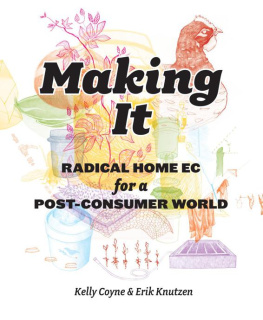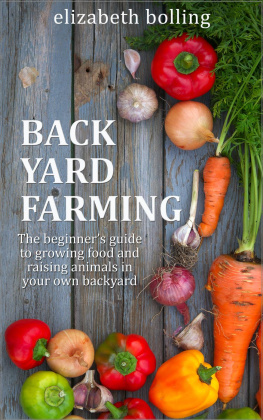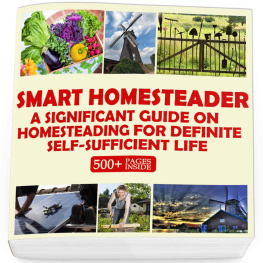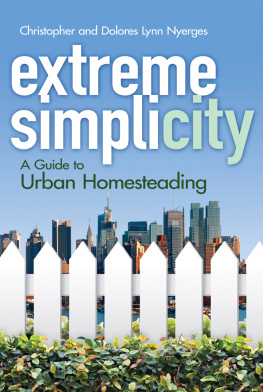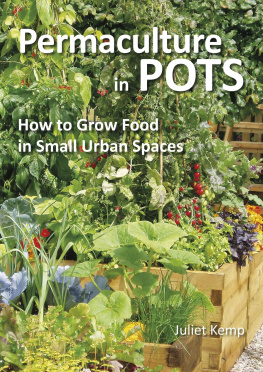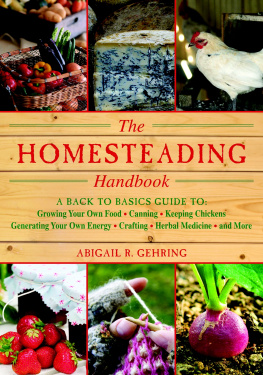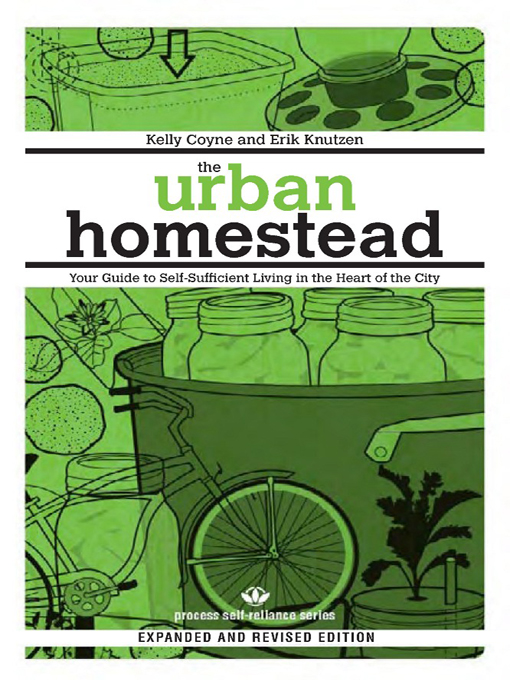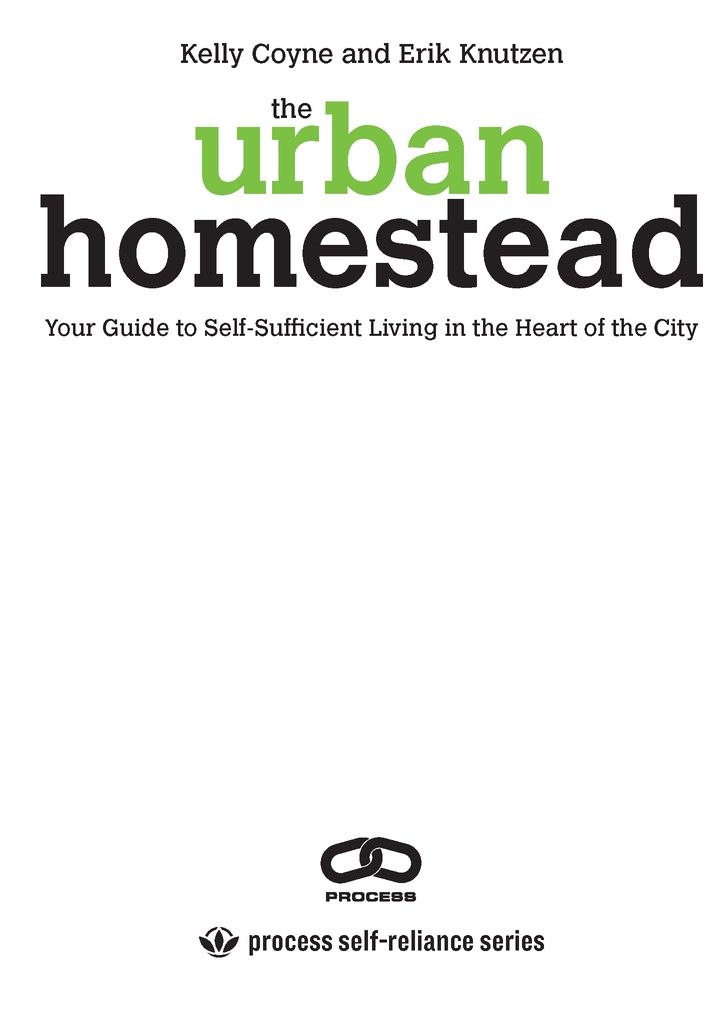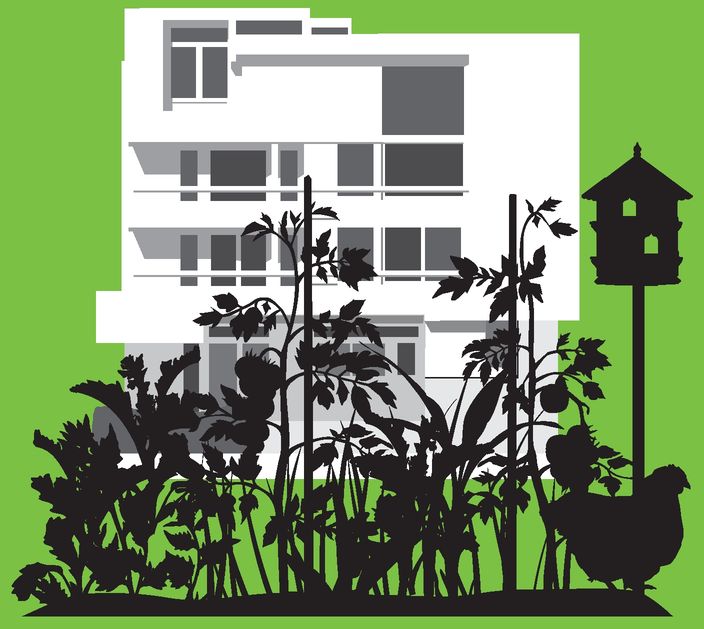Table of Contents
This book is dedicated to the South-Central Farmers, and the memory of 14 acres that once fed 360 families.
Aknowledgments
First, we would like to thank our amazing contributors for sharing their stories with us: Amy, Taylor Arneson, Severine Baron, David Byrne, Deena Capparelli, Laura Cooper, the Greywater Guerrillas, Eva, John Howe, Suzanne Mackey, Ken & Lorie Mars, Mary McGilvray, Jean-Paul Monch, Nicholas Sammond, Elon Schoenholz, Maya Shetreat, and Claude Willey.
And then we must kneel in gratitude before our keen-eyed, patient and insightful beta-readers: Caroline Clerc, Bryn-Ane MacKinnon and Elon Schoenholz.
Before, during and after the writing of this book weve been inspired by the work of the following people and organizations. We offer this short list knowing were going to forget a lot of people. Once you put your special glasses on, youll see theres so many smart people doing cool things out there that its hard to keep track. But wed like to at least mention Nance Klehm, David Kahn, Steven Box, Enci, The Culture Club, Sandor Katz, Melinda Stone, Tara of Silver Lake Farms, Paul Mackey, Nick Taggart, the revolutionaries at the Eco Village, the Bike Kitchen and the Fallen Fruit collective. Theyve all shown us the way.
Thanks also to the visionaries behind Process Media: Jodi Wille and Adam Parfrey, for liking our blog and asking us if maybe wed like to write a book.
And of course, where would we be without our moms? Thanks, Moms!
Preface
When we began this book in the spring of 2007, we had no idea that we were sitting on the crest of a wave. Traveling around since then, weve met hundreds (thousands?) of wonderful people from all walks of life who are embracing the home arts of gardening, brewing, home cooking and small-stock keeping. DIY living sustainable, grounded and local represents a cultural sea change, one that is happily here to stay.
Weve had a heck of a good time meeting you all and its been an honor, too.
Thank you.
Kelly and Erik
October 29, 2009
Los Angeles
leashing The Homesteader Within
Unleashing The Homesteader Within
Lets get together and get some land
Raise our food like the man
People people
We gotta get over before we go under
James Brown, Funky President
Imagine sitting down to a salad of peppery arugula and heirloom tomatoes that you grew yourself. Or a Sunday omelet of eggs laid that morning, served with a thick slice of fresh sourdough, butter and apricot jam all homemade, of course. Or imagine toasting your friends with a mead made from local honey. Where would you have to move to live like this? A commune in Vermont? A villa in Italy?
My husband Erik and I have done all of this in our little bungalow in Los Angeles, two blocks off of Sunset Boulevard. We grow food and preserve it, recycle water, forage the neighborhood, and build community. Were urban homesteaders.
Though we have fantasies about one day moving to the country, the city holds things that are more important to us than any parcel of open land. We have friends and family here, great neighbors, and all the cultural amenities and stimulation of a city. It made more sense for us to become self-reliant in our urban environment. There was no need for us to wait to become farmers. We grow plenty of food in our backyard in Echo Park and even raise chickens.
Once you taste lettuce that actually has a distinct flavor, or eat a sweet tomato still warm from the sun, or an orange-yolked egg from your own hen, you will never be satisfied with the pre-packaged and the factory-farmed again. Our next step down the homesteading path was learning to use the old home arts to preserve what we grew: pickling, fermenting, drying and brewing. A jar of jam that you make of wild blackberries holds memories of the summer, and not the air of the Smuckers factory.
When you grow some of your own food, you start to care more about all of your food. Just where did this come from? wed find ourselves asking when we went shopping. Whats in it? At the same time, we began to learn about cultured and fermented foods, which have beneficial bacteria in them. Few of these wonder-foods are available in stores. The supermarket started to look like a wasteland.
A little history
The idea of urban farming is nothing new. Back in the days before freeways and refrigerated trucks, cities depended on urban farmers for the majority of their fresh food. This included small farms around the city, as well as kitchen gardens. Even today, there are places that hold to this tradition. The citizens of Shanghai produce 85% of their vegetables within the city, and thats just one example of a long Asian tradition of intense urban gardening. Or consider Cuba. Cubans practiced centralized, industrial agriculture, just as we do, until the collapse of the Soviet Union in 1989. Overnight, Cubans were forced to shift from a large, petroleum-based system to small-scale farming, much of it in cities. Today, urban organic gardens produce half of the fresh fruits and vegetables consumed by Cubans.
The United States once was a nation of independent farmers. Today most of us do not know one end of a hoe from the other. In the last half of the 20th century, a cultural shift unique in human history came to pass. We convinced ourselves that we didnt need to have anything to do with our own food. Food, the very stuff of life, became just another commodity, an anonymous transaction. In making this transition, we sacrificed quality for convenience, and then we learned to forget the value of what we gave up.
Large agribusiness concerns offer us flavorless, genetically modified, irradiated, pesticide-drenched frankenvegetables. They are grown in such poor soil the result of short-sighted profit-based agricultural practices that they actually contain fewer nutrients than food grown in healthy soil. Our packaged foods are nutritionally bankrupt, and our livestock is raised in squalid conditions. The fact is that we live in an appalling time when it comes to food. True, we have a great abundance of inexpensive food in supermarkets, but the disturbing truth is that in terms of flavor, quality and nutrition, our greatgrandparents ate better than we do.
There is a hidden cost behind our increasingly costly supermarket food. The French have a term,
malbouffe, referring to junk food, but with broader, more sinister implications. Radical farmer Jos Bov, who was imprisoned for dismantling a McDonalds restaurant, explains the concept of
malbouffe:
I initially used the word shit-food, but quickly changed it to malbouffe to avoid giving offense. The word just clicked perhaps because when youre dealing with food, quite apart from any health concerns, youre also dealing with taste and what we feed ourselves with. Malbouffe implies eating any old thing, prepared in any old way. For me, the term means both the standardization of food like McDonalds the same taste from one end of the world to the other and the choice of food associated with the use of hormones and Genetically Modified Organisms as well as the residues of pesticides and other things that can endanger health.


